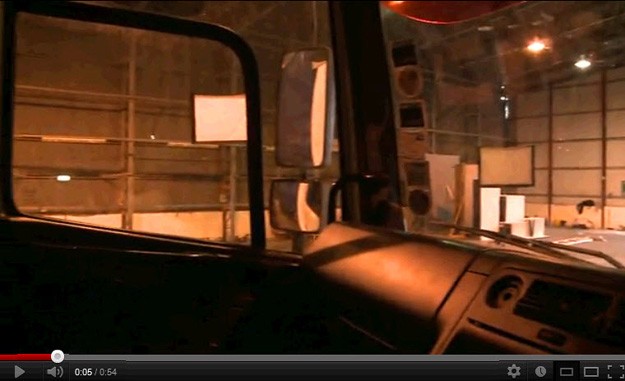
Anyone who cycles on roads should make a special point of watching this video (it’s only 54 seconds). So should anyone who drives a large vehicle, especially bus and truck drivers.
It’s timely following the widely reported death of a cyclist outside Olympic park in London last week in an accident with a bus carrying Games officials.
According to an eye-witness, the cyclist collided with a bus turning left (I’ve read the witness’s full account but he’s subsequently removed it from the web – comments are still up though).
Much of the subsequent discussion in London has been about the temporary removal of bike lanes during the Games. There’s another issue here though that has implications for all cities.
I can’t know the full circumstances of this accident, but it’s certainly possible limited visibility was involved. Drivers of buses and trucks often have major blind spots in their rear and side vision, as the video shows.
I think it’s appalling we still accept as unavoidable that drivers of large vehicles must have restricted rear and side vision. It presents an obvious hazard to all road users, but especially to cyclists and pedestrians who’re particularly vulnerable.
The number of cyclists and heavy vehicles on our roads is increasing, so the potential for conflict is also increasing. The reality is cyclists will have to share road space with drivers for many years yet.
Australian cities won’t be turned into Danish or Dutch cities with fully bicycle segregated infrastructure overnight or even within decades. There are too many competing demands for money and there’re too many O’Farrell’s.
Rather than accept the enormous shortcomings of mirrors, there’s a straightforward technological solution – in-vehicle cameras. They’re now very cheap to buy and easy to retrofit to existing vehicles. They could supplement mirrors to increase the driver’s field of view; or multiple cameras could replace mirrors altogether.
Cameras seem remarkably good value relative to the potential contribution they can make to reducing death and injury to all other road users. More travellers might cycle if they felt drivers of large vehicles were likely to have better information about their presence.
There’s no guarantee, but I expect drivers will very likely look at a screen if it’s there and providing pertinent information. And the fact of installing cameras, along with training and publicity, should increase driver awareness of their responsibilities to other road users.
This isn’t something that should be confined only to new vehicles. Cameras are cheap enough that existing owners of large vehicles should be obliged to install them too. Suitable standards need to be formulated and a fair time frame for implementation established, but it needs to be done sooner rather than later.







Crikey is committed to hosting lively discussions. Help us keep the conversation useful, interesting and welcoming. We aim to publish comments quickly in the interest of promoting robust conversation, but we’re a small team and we deploy filters to protect against legal risk. Occasionally your comment may be held up while we review, but we’re working as fast as we can to keep the conversation rolling.
The Crikey comment section is members-only content. Please subscribe to leave a comment.
The Crikey comment section is members-only content. Please login to leave a comment.